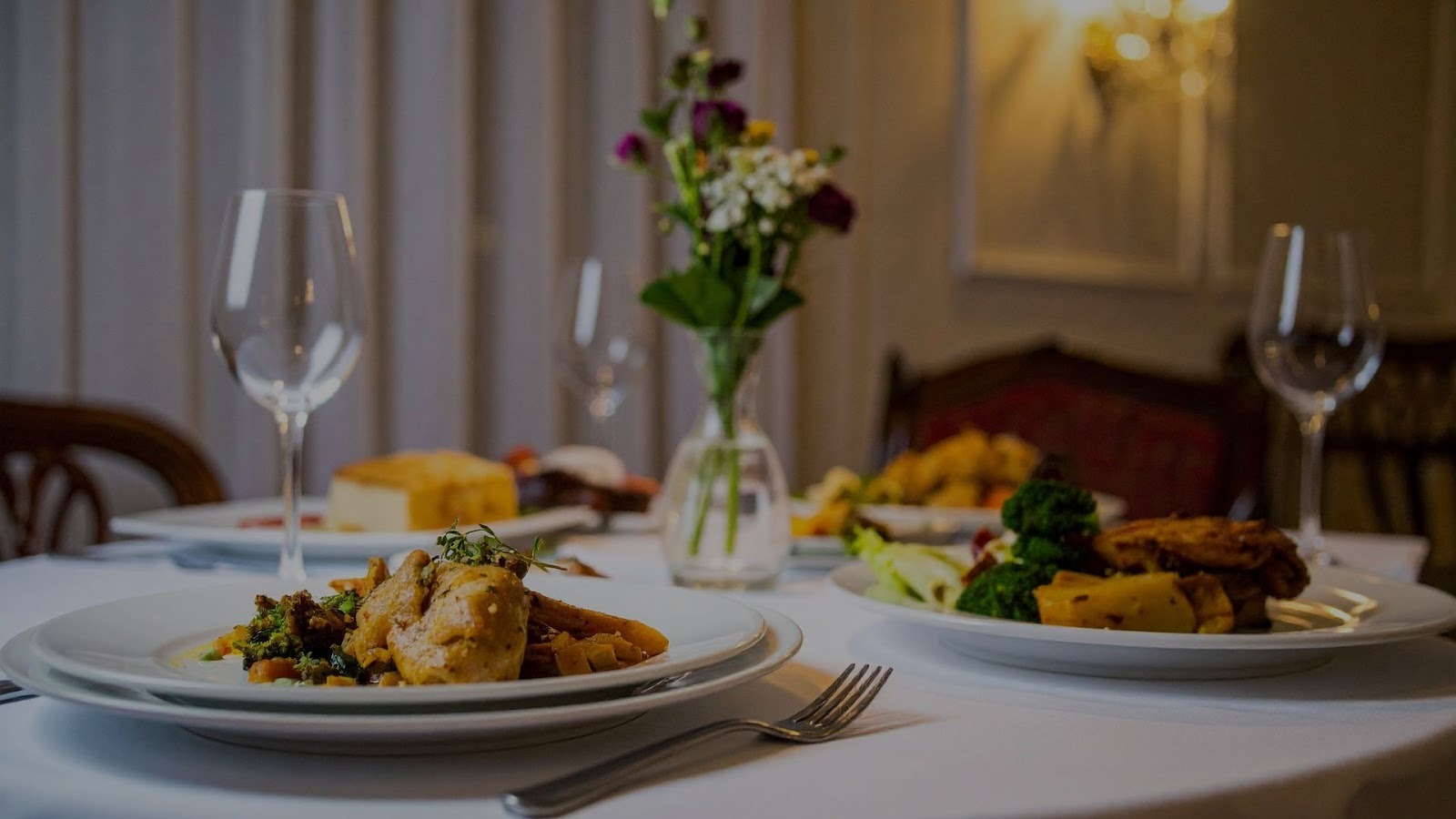November 3, 2025
.jpg)
Are you offering exceptional food and service, yet still seeing slow weekday bookings or inconsistent reservations? Many fine dining restaurants face this challenge. Guests now compare restaurants online before ever walking through the door. In fact, 94% of diners choose a restaurant based on online reviews and digital presence. This means your marketing is just as important as your menu and hospitality.
Fine dining is not about discounts or loud promotions. It’s about building trust, exclusivity, and memorable experiences. But without a clear marketing plan, it becomes hard to keep tables full, encourage repeat visits, and maintain a strong reputation.
This blog will guide you through a simple, step-by-step fine dining marketing strategy, designed to help you attract the right guests, strengthen your brand identity, and create consistent bookings.
A restaurant marketing plan is a clear roadmap for how your restaurant will attract new guests, keep current guests returning, and maintain a strong reputation. It outlines who your ideal diners are, what makes your restaurant unique, and the strategies you’ll use to promote your dining experience across online and offline channels.
For fine dining restaurants, this is especially important. Your goal isn’t just filling seats, it's ensuring the right guests book, return, and recommend your restaurant to others. A well-structured marketing plan helps you maintain brand consistency, control your guest experience, and create demand even during slower periods. Understand why your business needs it.
Fine dining restaurants don’t compete on speed, discounts, or convenience. You compete on experience, reputation, and emotional value. Guests come to you for a memorable evening, a celebration, or an elevated meal, and your marketing needs to reflect that.

However, this creates a challenge. You have:
So every guest matters more.
Just a few empty tables can noticeably affect revenue. One negative review can influence new reservation decisions. And if your brand message is inconsistent, online or offline, guests may not feel the level of trust required to book with confidence.
Fine dining marketing needs to:
Your marketing should feel as polished as your plating. Guests should sense your values, story, and style the moment they search your restaurant, visit your website, or read a review.
This foundation guides your next step: crafting a clear, meaningful brand story that reflects who you are and why guests should choose you.

A well-written marketing plan helps build a strong marketing foundation focused on consistency, guest experience, and brand prestige. Here are the step-by-step strategies:
Your mission explains why your restaurant exists. It sets the emotional tone for your entire guest experience. Fine dining guests choose restaurants based on the story, philosophy, and values behind the food. So this message must be clear and meaningful.
Start by defining:
Then translate this into a simple brand statement:
Template:
“We deliver (experience) to (guest type) through (your cuisine, service approach, atmosphere, or philosophy).”
Example:
“We create memorable tasting experiences inspired by coastal ingredients, prepared with refined technique and served in an intimate, slow-paced atmosphere.”
Your brand identity should be visible in:
Consistency is what builds trust. Guests should feel the same brand personality online and in-person.
Fine dining thrives when you attract the right guests, not just more guests. Your ideal diners are the people who value thoughtful service, refined flavors, and the atmosphere you create.
Start by observing who currently books with you and who you want to see more often. These may be couples celebrating milestones, business professionals hosting clients, travelers exploring local cuisine, or locals who seek memorable dining experiences.
Understand what matters most to them, whether it's intimacy, exclusivity, storytelling, or craftsmanship. When you know exactly who you’re speaking to, your messaging becomes clearer, your offerings feel more intentional, and your marketing channels become easier to choose.
Instead of trying to appeal to everyone, you communicate directly with those who genuinely appreciate what you do.
Understanding your local dining landscape helps you see where your restaurant stands and where it can stand out. This doesn’t mean copying others. It means noticing what nearby fine dining restaurants are known for, how they present themselves online, and what guests highlight in their reviews.
Pay attention to details like pricing style, menu structure, atmosphere, and the tone they use when communicating with guests. Look at what they do well and where diners express dissatisfaction. Gaps may include slow service, limited wine choices, inconsistent presentation, or lack of warmth. These observations help you identify opportunities to differentiate your experience in meaningful ways.
The goal is to sharpen your own strengths, not adjust to trends. When you know your position in the market, your story and offerings become clearer and easier to communicate.
A SWOT analysis helps you understand your restaurant’s current position clearly, so your marketing decisions are based on reality, not assumptions. It shows what you can highlight, what needs improvement, and where to focus your efforts.
S = Strengths: What do guests love most?
Examples: exceptional service pacing, wine knowledge, chef reputation, ambiance.
W = Weaknesses: What could limit guest satisfaction or growth?
Examples: limited parking, slow weeknights, menu complexity, seating capacity.
O = Opportunities: Where could you expand or refine your experience?
Examples: private dining events, chef’s table nights, seasonal tasting menus.
T = Threats: What external factors may affect demand or perception?
Examples: new restaurants in the area, rising ingredient costs, shifting dining trends.
This exercise helps you prioritize what matters most. You don’t need a long document, just an honest look at your restaurant through the guest’s perspective.
Once you understand your guests and your market position, define what you want your marketing to achieve. Your goals should be specific enough that you can track progress, not broad statements like “get more customers.” Instead, focus on outcomes that affect your dining room and revenue.
For example, you may want to increase weekday reservations, grow private dining bookings, or encourage more repeat visits from existing guests.
Each goal should be realistic, tied to a timeline, and aligned with your capacity and service style. Clarity here helps prevent scattered efforts and ensures every marketing activity supports the same direction.
When your goals are measurable, you can also identify what’s working and adjust without wasting resources.
Once your goals are clear, focus on the channels that actually reach your ideal guests. Fine dining marketing should feel refined, consistent, and intentional. You don’t need to be everywhere, only where your guests look for trust and inspiration.
Use these core channels:
Focus on the channels that support your identity and where your guests naturally spend time. With platforms like iOrders, you can accept direct website or QR code orders without sending guests to third-party apps. This keeps your brand front and center and protects the dining experience you’ve worked to build.
Your marketing budget should support consistency, not one-time bursts of activity. Rather than spreading funds across too many channels, invest in the elements that directly influence guest perception and reservation decisions.
Consider prioritizing:
Treat your marketing spend as an investment in the guest experience, not just advertising.
With a clear budget in place, the next step is to track outcomes and refine your strategy based on real results.
A marketing plan only works if you track how well it’s performing. Review your results regularly to understand what’s creating real impact and where adjustments are needed.
Look at reservation patterns, guest feedback, review sentiments, social engagement, and repeat visit behavior. If weekday evenings remain slow, focus on promoting tasting menus or private dining.
If reviews mention inconsistencies, refine service training or pacing. Small, consistent improvements are more effective than large, sudden changes. Platforms like iOrders offer built-in loyalty data, guest insights, and review sentiment analytics. You can track how many guests you served and how they felt about their experience.
Fine dining isn’t only about what happens at the table. It’s shaped by how guests discover you, how easy it is to book with you, and how valued they feel after they leave. A clear marketing plan helps you tell your story, reach the right guests, and create experiences worth returning for.
To support this, your online experience should feel just as polished as your dining room. That means seamless reservations, commission-free direct ordering, and thoughtful guest relationship-building, without relying on third-party platforms.
This is where iOrders helps. It lets you own your brand, keep your margins, and build lasting guest loyalty across dine-in, pickup, and delivery.
Book a demo to see how iOrders can support your fine dining experience.
1. What makes fine dining marketing different from regular restaurant marketing?
Fine dining marketing focuses on experience, reputation, and trust, rather than discounts or fast promotions. The goal is to attract guests who appreciate your atmosphere, storytelling, and service, not just convenience or price.
2. How often should I review my marketing plan?
Review it monthly or quarterly. Small, consistent refinements based on performance, reviews, and reservation patterns create better results than major changes once a year.
3. Do fine dining restaurants need to be on every social media platform?
No. It’s better to be strong on one or two platforms—like Instagram and Google—than stretched thin across many. Quality and consistency matter more than volume.
4. How can fine dining restaurants encourage repeat visits?
Personalized follow-ups, thoughtful thank-you messages, and loyalty experiences (not generic discounts) help guests feel remembered and valued, encouraging them to return.
5. Can online ordering fit a fine dining experience without hurting the brand?
Yes, if it’s controlled and branded. With platforms like iOrders, you keep your presentation, pricing, and packaging standards while avoiding third-party commissions and brand dilution.